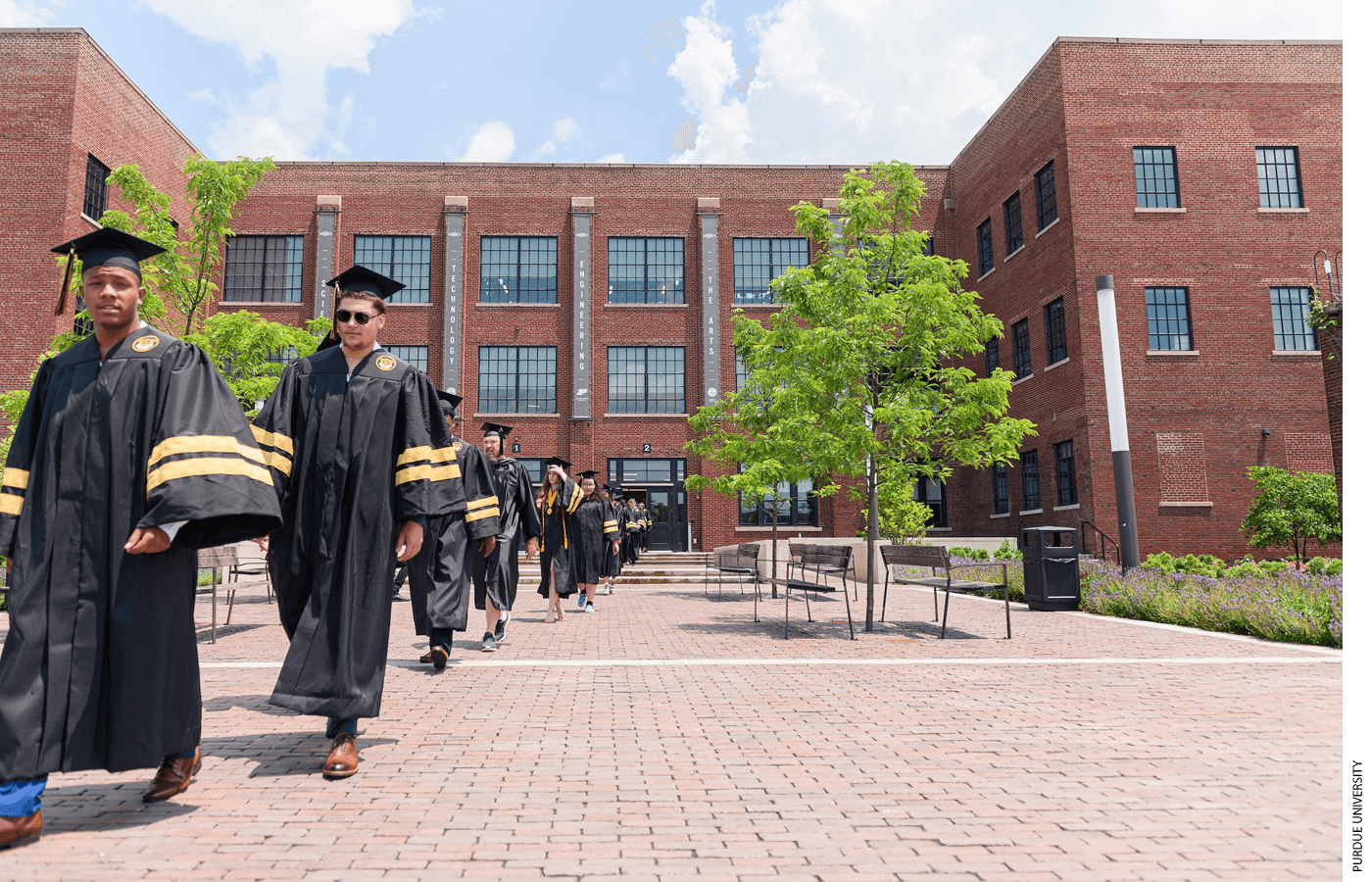
Students are returning to school this year on the heels of another summer of sobering headlines about the nation’s lackluster academic recovery. With multiple indicators showing stalled learning recovery and education policy experts sounding alarm bells at Congressional hearings, we must finally treat lagging educational outcomes as a pressing national emergency.
National trends mirror statewide trends in Indiana, where high school juniors take the SAT as their required high school state assessment. This assessment provides us with the most comprehensive snapshot of college readiness in a state that continues to see college entry rates decline.
Unfortunately, statewide SAT college-readiness rates decreased from spring 2022 to spring 2023 for Hoosier students. Most of the 11 school districts in Marion County, where Indianapolis is located, also saw declines. This was true for the county’s largest school district, Indianapolis Public Schools (IPS), where only seven Black students in high schools managed directly by the district demonstrated college-readiness on the SAT. Seven.
But there is good news: Students in Indianapolis charter schools drove outsized college-readiness gains that bucked both local and statewide trends.
There are two types of charter schools in Indianapolis. Independent charter schools operate completely separate from school districts, and innovation charter schools operate in partnership with IPS. Both types of charter schools have operational autonomy and are governed by nonprofit boards. Most of them are authorized by the mayor of Indianapolis.
The gains for Indianapolis students who attend innovation charter high schools were particularly impressive. As a group, innovation charter schools increased their college-readiness rates by 10.6 percentage points from the previous year, from 20.8 percent to 31.4 percent. These schools now surpass state averages for virtually every student group, including Black, Latino, and special education students. Students attending innovation charter high schools are over seven times more likely to demonstrate college-readiness than their peers in direct-managed IPS schools.
For Black students, the top 10 public high schools within IPS boundaries are charter schools. Black students in innovation charter high schools demonstrate college-readiness at nine times the rate of their peers in direct-managed IPS schools.
For Latino students, the top seven public high schools within IPS boundaries are charter schools. Latino students in innovation charter high schools demonstrate college-readiness at over four times the rate of their peers in direct-managed IPS schools.
What conditions are driving these significant results? The common factor is autonomy. Indianapolis charter school leaders can make building-level decisions that are tailored to their unique school communities. School founders, with support from The Mind Trust, an Indianapolis-based education nonprofit, have taken advantage of this autonomy successfully to create school models that not only spark students’ passions but provide instruction and support that meet their students’ needs.
The result is a diverse tapestry of quality high school options that rivals any city in the country. For example, high schoolers interested in early college can enroll at BELIEVE Circle City, which offers dual enrollment coursework as early as a student’s freshman year.
Purdue Polytechnic High School has two Indianapolis campuses that offer STEM-focused, project-based learning with opportunities for students to explore their passions independently and gain acceptance into one of Indiana’s flagship universities.
Herron and Herron-Riverside High Schools offer a rigorous classical, liberal arts curriculum that produces some of the highest college-readiness rates in the entire state.
Adults who previously dropped out of high school can enroll in one of several campuses of The Excel Center, a nationally acclaimed network of adult charter high schools that operate in partnership with Goodwill.
The demand for these innovative school models continues to grow. Last school year, charter high schools served 60% of public-school students within IPS boundaries.
If you had told an Indianapolis civic leader 20 years ago that many of Indiana’s best and most innovative high schools would be located in the city’s urban core, you likely would have been laughed out of the room. But that is now the reality within one of our state’s most impoverished communities.
Indianapolis has learned that the traditional factory model approach to high school education is unable to meet the needs of our 21st Century students. Our charter school sector has accelerated the move away from comprehensive high schools that pass students along in the name of efficiency toward a more nimble and relevant high school experience that unlocks the potential of everyone.
As our country takes the time to look back at these first few years of post-pandemic learning, it will be very clear which communities decided to grow innovative solutions that drive student achievement and those that decided to maintain the status quo.
Reversing learning loss will require a focus on growing proven methods that create better outcomes for students. Indianapolis serves as one model for how that can happen, at scale, for students who need it the most.
Brandon Brown is CEO of The Mind Trust in Indianapolis.


